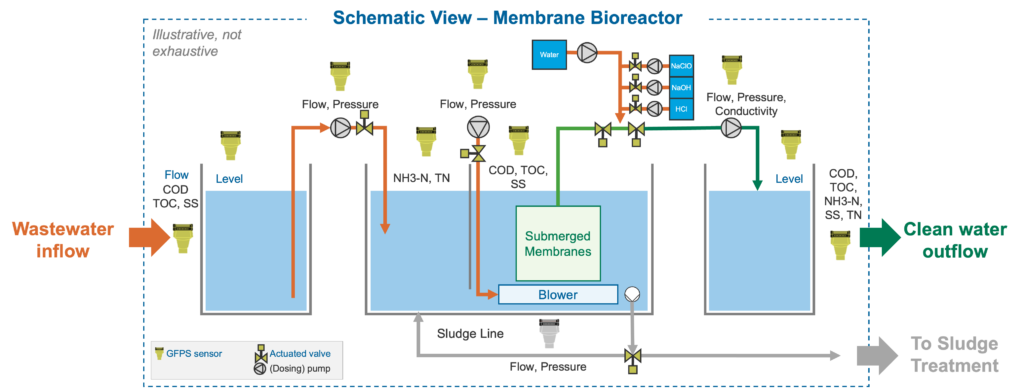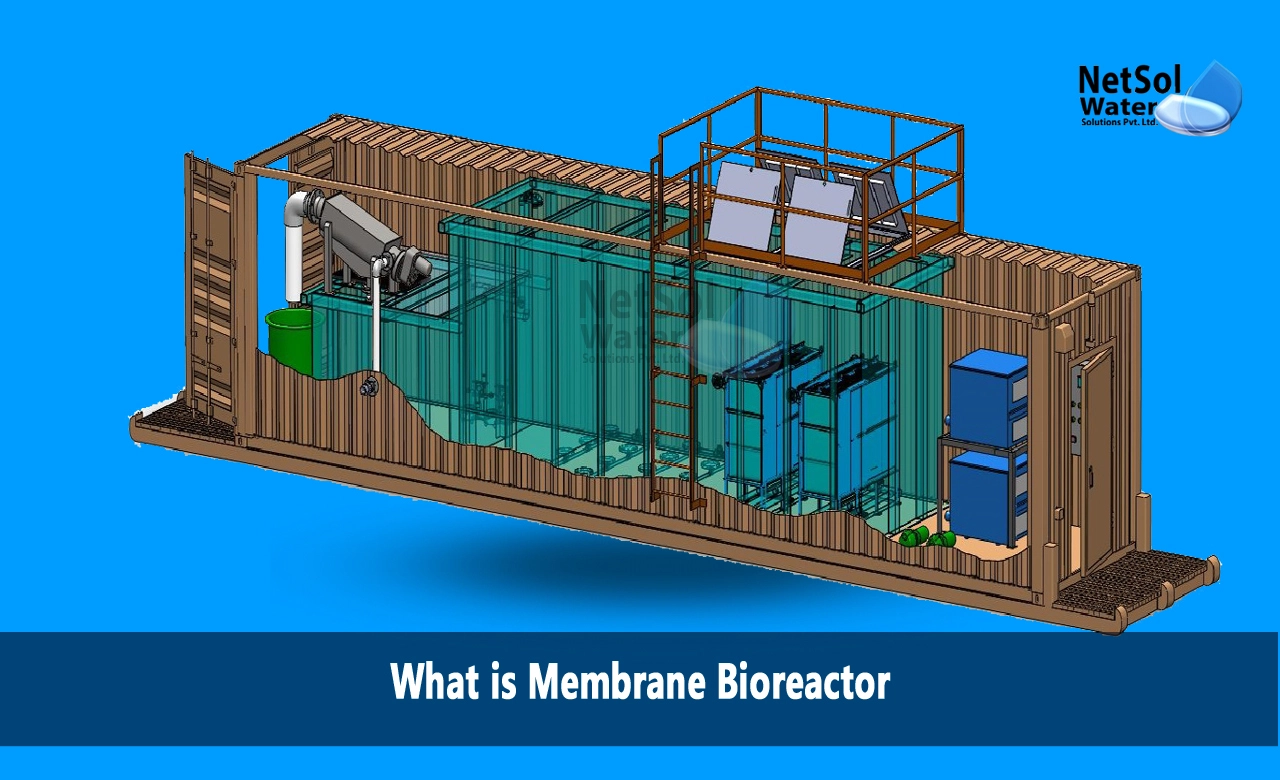Membrane Bioreactor as a Sustainable Solution for High-Volume Wastewater Treatment
Membrane Bioreactor as a Sustainable Solution for High-Volume Wastewater Treatment
Blog Article
The Advantages of Membrane Layer Bioreactors in Lasting Wastewater Management
Membrane layer bioreactors (MBRs) represent a crucial innovation in sustainable wastewater administration, efficiently merging organic treatment with innovative membrane layer filtering modern technology. This integration not only boosts effluent top quality by effectively eliminating pollutants but likewise opens up methods for water reuse in numerous applications, thus attending to the pushing requirement for source conservation. Additionally, the portable style of MBRs adds to substantial reductions in ecological effect and operational costs. As the need for sustainable services increases, checking out the diverse advantages of MBRs might disclose unexpected effects for the future of wastewater therapy systems.
Review of Membrane Layer Bioreactors
Membrane bioreactors (MBRs) represent a substantial advancement in wastewater treatment innovation, integrating biological deterioration with membrane layer filtering to enhance the efficiency of the therapy procedure. This innovative system incorporates the benefits of traditional turned on sludge processes with membrane modern technology, permitting enhanced solid-liquid separation. MBRs make use of semi-permeable membrane layers to separate cured water from biomass, leading to high-quality effluent that can be reused or securely released into the environment.
The operational layout of MBRs usually involves a bioreactor where microbes damage down natural issue, complied with by a membrane system that filters the mixed alcohol. This setup not only decreases the impact of the treatment facility yet likewise permits greater biomass focus and decreased hydraulic retention times. MBRs are qualified of treating a broader range of contaminants, including nutrients and virus, making them ideal for different applications, from local wastewater treatment to commercial effluent processing.
The combination of MBRs right into wastewater administration systems is a sign of an expanding pattern towards efficient and lasting methods in environmental engineering. Their capacity to generate top notch effluent while reducing space requirements settings MBR technology as a crucial gamer in contemporary wastewater therapy options.
Enhanced Effluent Top Quality

The membrane filtration process works as a physical obstacle, making it possible for the retention of microorganisms and particle issue, which adds to a clearer and cleaner effluent (Membrane Bioreactor). Additionally, MBRs run at greater biomass focus than conventional activated sludge systems, promoting much more efficient biodegradation of contaminants. This results in a reduction in biochemical oxygen need (BODY) and complete put on hold solids (TSS) levels in the last effluent
Additionally, MBRs demonstrate exceptional performance in treating tough wastewater structures, such as commercial effluents and wastewater with high nutrient tons. Therefore, the effluent produced is often of greater high quality, allowing for more flexible disposal options and reduced environmental influence. Inevitably, the enhanced effluent high quality accomplished through MBR modern technology emphasizes its important function ahead of time lasting wastewater management techniques.
Water Reuse Opportunities
The top quality effluent produced by membrane bioreactors (MBRs) opens up significant opportunities for water reuse in various applications. MBRs properly get rid of pollutants, including pathogens, put on hold solids, and raw material, causing cured water that satisfies or exceeds regulative requirements for reuse. This top quality permits the execution of water reusing efforts across varied industries.
One prominent application remains in farming, where treated wastewater can be used for watering, advertising sustainable farming techniques while conserving freshwater resources. Additionally, MBR-treated effluent can be made use of for industrial processes such as air conditioning, cleansing, and as a procedure water resource, considerably minimizing the need for drinkable water in these operations.
In urban atmospheres, MBRs assist in making use of reclaimed water for landscape watering, toilet flushing, and various other non-potable uses, adding to the overall resilience of water systems. you could try these out In addition, the assimilation of MBR innovation in decentralized systems help in handling local water needs, specifically in water-scarce areas.
Reduced Ecological Influence
How can the adoption of membrane layer bioreactors (MBRs) add to a lowered ecological impact in wastewater administration? MBRs considerably boost the therapy efficiency of wastewater while minimizing eco-friendly disruptions. By integrating organic treatment processes with membrane purification, MBRs properly eliminate a variety of pollutants, consisting of raw material, nutrients, and virus. This sophisticated filtration causes higher-quality effluent, which is crucial for safeguarding water ecological communities and minimizing look at here now the concern on all-natural water bodies.
In addition, MBRs operate at lower hydraulic retention times compared to standard systems, causing smaller therapy plant footprints. This portable design lowers land use, thereby maintaining natural habitats and biodiversity. The procedure also generates less sludge than traditional techniques, minimizing disposal obstacles and reducing greenhouse gas discharges associated with sludge monitoring.
Additionally, MBRs facilitate the recuperation of beneficial resources, such as water and nutrients, adding to a round economy. By enabling water reuse for irrigation or industrial processes, MBRs help relieve freshwater deficiency, hence promoting lasting water utilize methods. Inevitably, the adoption of MBR modern technology represents a considerable stride in the direction of reducing the environmental impact of wastewater administration systems.
Economic Benefits of MBRs

Additionally, MBRs promote the production of high-grade effluent, which can be reused for various applications, such as farming watering and industrial processes - Membrane Bioreactor. This reuse capacity can dramatically reduce water purchase prices, providing an economic incentive for sectors encountering rigorous water laws
The compact layout of MBR systems also results in reduced land demands, which is especially valuable in metropolitan areas where property is costly. By reducing room, industries and towns can minimize land procurement and upkeep expenses.
Additionally, MBRs frequently call for less constant maintenance and have a longer lifespan than conventional systems, further contributing to set you back savings. In recap, the economic advantages of MBRs-- varying from reduced operational expenses to land financial savings and effluent reuse-- make them an engaging choice for sustainable wastewater management, supplying both immediate and lasting monetary advantages.
Verdict
Membrane layer bioreactors represent a transformative approach to sustainable wastewater monitoring, incorporating biological treatment with sophisticated membrane layer filtering for remarkable effluent quality. Their capacity for effective impurity elimination assists in water reuse, thereby preserving crucial freshwater resources. Furthermore, MBRs add to reduced environmental effects via portable designs and reduced sludge generation. Economic benefits additionally boost their practicality, making MBRs a promising service for resolving the challenges of wastewater therapy and advertising lasting resource management.
Membrane bioreactors (MBRs) represent an essential innovation in sustainable wastewater monitoring, properly merging organic treatment with innovative membrane layer purification technology.Membrane layer bioreactors (MBRs) stand for a substantial advancement in wastewater therapy innovation, see post integrating organic destruction with membrane filtering to boost the efficiency of the treatment process.Accomplishing improved effluent top quality is one of the most considerable advantages of utilizing membrane layer bioreactors (MBRs) in wastewater therapy.In addition, MBRs show outstanding performance in dealing with challenging wastewater compositions, such as commercial effluents and wastewater with high nutrient lots.Incorporating membrane layer bioreactors (MBRs) into wastewater administration not only lowers environmental effect however additionally offers substantial financial benefits.
Report this page